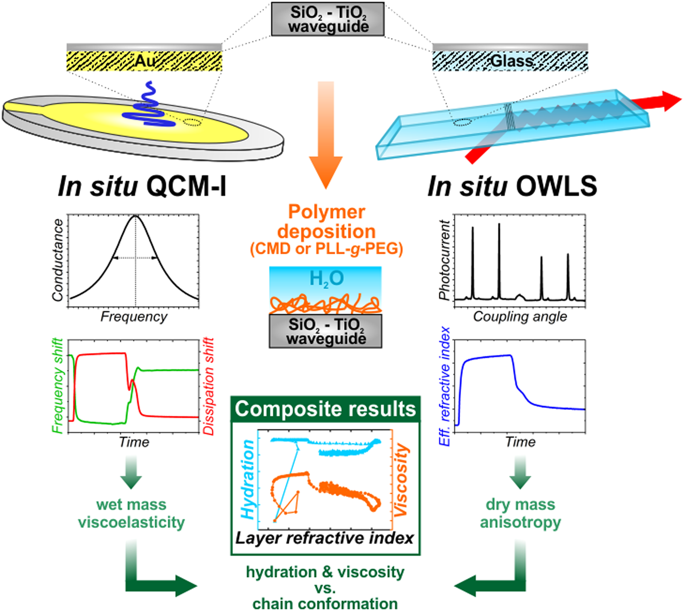We are very proud that both of our OWLS and QCM-I biosensor systems were used in the recent comparative study published on Nature.com
See the abstract below and visit Nature.com to read the full publication.
In situ viscoelastic properties and chain conformations of heavily hydrated carboxymethyl dextran layers: a comparative study using OWLS and QCM-I chips coated with waveguide material.
Abstract
Hydration, viscoelastic properties and dominant structure of thin polymer layers on the surface of waveguide material were evaluated using optical waveguide lightmode spectroscopy (OWLS) and quartz crystal microbalance (QCM) methods. The fundamentally different principles of the two applied label-free biosensors enable to examine analyte layers from complementary aspects, e.g. to determine the amount of bound water in hydrated layers. In this study, a new QCM instrument with impedance measurement (QCM-I) is introduced. Its specially designed sensor chips, covered by thin film of waveguide material, supply identical surface as used in OWLS sensors, thus enabling to perform parallel measurements on the same type of surface. Viscoelastic analysis of the measured data was performed by our evaluation code developed in MATLAB environment, using the Voinova’s Voigt-based model. In situ deposition experiments on the ultrathin films of poly(L-lysine)-graft-poly(ethylene glycol) (PLL-g-PEG) were conducted for instrumental and code validation. Additionally, a novel OWLS-QCM data evaluation methodology has been developed based on the concept of combining hydration and viscoelastic data with optical anisotropy results from OWLS measurements. This methodology provided insight into the time-dependent chain conformation of heavily hydrated nano-scaled layers, resulting in unprecedented structural, hydration and viscoelastic information on covalently grafted ultrathin carboxymethyl dextran (CMD) films. The measured mass values as well as hydration and viscoelastic properties were compared with the characteristics of PLL-g-PEG layers.
Authors: András Saftics, György Aurél Prósz, Barbara Türk, Beatrix Peter, Sándor Kurunczi, Robert Horváth
